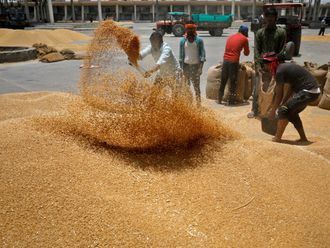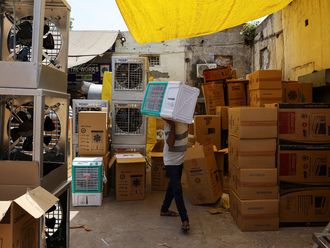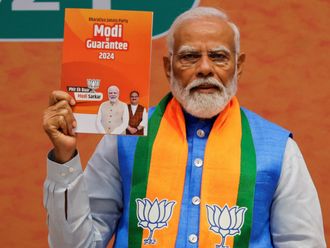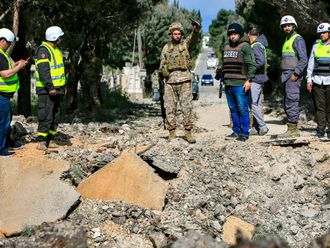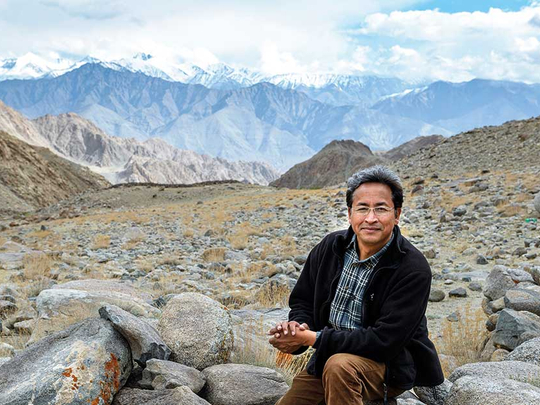
New Delhi: “While people try to read between the lines, I like seeing behind and beyond what manifests directly before me. And most of my answers come from such observations,” says Sonam Wangchuk, winner of this year’s Ramon Magsaysay Award.
Formally conferred with the award in Philippines on August 31, Wangchuk runs the Students’ Educational and Cultural Movement (Secmol), an alternative school in Jammu and Kashmir’s Ladakh region. The school exposes students to real-life skills and empowers them to chart their own course. Wangchuk says: “We changed the teaching approach from ‘chalk, talk and stick’ to child-centred joyful and meaningful learning.”
Focusing on local knowledge for answers to the challenges posed by the difficult terrain, he succeeded with each passing year.
The 51-year-old has been recognised for “his uniquely systematic, collaborative and community-driven reform of learning systems in remote northern India, thus improving the life opportunities of Ladakhi youth, and his constructive engagement of all sectors in local society to harness science and culture creatively for economic progress, thus setting an example for minority peoples in the world,” the Ramon Magsaysay Award Foundation said in its citation for the winner.
Ladakh-based Wangchuk is among the two Indian winners of this year’s award. The other is Bharat Vatwani.
Wangchuk learnt his lessons early in life. Due to differences with his father (Sonam Wangyal, a politician from Leh) over his stream of interest, Wangchuk faced obstacles. “I had to teach to finance my education. But within few months, I made enough money to fund my education for the next couple of years! That experience taught me a lot,” he says.
He completed BTech in Mechanical Engineering from National Institute of Technology, Srinagar, in 1987. Noticing major problems across the education system in Ladakh, he decided to set up Secmol.
Confusing terms
Wangchuk, who was also the inspiration of the 2009 Amir Khan movie 3 Idiots, says, “Government schools in Ladakh used Urdu as medium of learning up to Grade 8. Thereafter, the medium changed to English. [As a result], most students ended up semi-literate in both Urdu and English, and virtually illiterate in Ladakhi. Also, since books came from Delhi, the chapters included unfamiliar themes such as coconut tree, ship, ocean and monsoon rain, which were very confusing for Ladakhi children, who had no idea of these. The result was that 95 per cent children failed in examinations in Grade 10 every year and thus, were denied higher education.”
The problem was aggravated because teachers themselves had undergone such experiences (as students) and had no idea how to simplify things. Everything had to be taught and absorbed through rote learning. In addition, every two years, the teachers were transferred to different areas away from home. This left many disturbed and demoralised. The villagers, on the other hand, were unaware of the genuine problems faced by teachers in remote areas and if the latter were absent for days or weeks, the villagers did not know if and to whom they could complain.
To Wangchuk, an engineer by profession, it took some time to realise these issues. In 1994, he launched the Operation New Hope (ONH) movement, to change the educational system in Ladakh. Under the new structure, the school experimented with syllabus. English was introduced at the primary school level, with new textbooks specially designed for students. The teachers were exposed to the teaching systems of other states and both teachers and administrators were made accountable.
“Importantly, we mobilised villagers to create Village Education Committees (VECs) and began educational campaigns on the importance of village schools. Gradually, the number of students passing the matriculation examinations increased. A large percentage of students passed the exams this year,” the reformist says.
Having taken on both manmade and natural challenges, Wangchuk has improved the lives of thousands of Ladakhis. Crediting it all to teachers, students, leaders and dreamers in Ladakh, he says, “There’s a need to find innovative and indigenous solutions to problems. One cannot tackle issues relating to adversity of the mountains by using the tools of foreign countries. It requires courage and originality in thought and action, which are bound to give distinctive results.”
Over the years, he has started other initiatives, too. In 2012, Secmol was designed and built as a solar-heated residential school. The eco-friendly campus, built using low-cost traditional techniques on principles of passive solar architecture, keeps the environs warm even in -30 degrees temperature.
Solving water trouble
In late 2013, Wangchuk built the prototype of an ice stupa to meet the demand for water in Ladakh. He says, “Global warming and shrinking glaciers have made things worse and has left little water available to farmers. Inspired by the experimental work of an 80-year-old Ladakhi engineer, Aba Chewang Norphel, who created flat ice fields at over 4,000m height, I realised it had the potential to reduce the problem of water in mountainous terrains. But villagers were reluctant to climb that high to maintain them. It was a tantalising situation. A logical water supply solution was available; yet it faced challenges.
“My aim was to find a solution to the water crisis faced by farmers during the critical planting months of April and May. By early 2014, we had successfully built a two-storey ice-stupa, which could store roughly 150,000 litres of winter stream water that would melt gradually in spring and be available to farmers when they needed it the most.”
Addressing the issue of water crisis, Wangchuk implores big cities across the world to use the resources sensibly. “Buying 20 pairs of shoes when you need only two makes no sense. Owning three cars when you can manage with one and using public transportation, bicycling or walking, will only keep you fit. So, please live simply, so that we in the mountains can simply live,” he appeals.
Meanwhile, Wangchuk has leapfrogged to his next ambitious project. He is working towards setting up the 1.5 billion Himalayan Institute of Alternatives (Hial) in Ladakh’s Phyang Valley. He explains, “Hial is contextualised for the mountains. We want to engage youth to tackle issues faced by mountain people, especially in the sphere of education, culture and environment. The idea is that students in the mountains get education that is relevant to their lives.”
Quick facts
• Sonam Wangchuk was born on September 1, 1966, in Uleytokpo, near Alchi, Leh district of Jammu and Kashmir.
• Studied Earthern Architecture at Craterre School of Architecture in Grenoble, France - 2011.
• Won several national and international awards including: Ashoka Fellowship for Social Entrepreneurship, United States (2002), The Green Teacher Award by Sanctuary Asia (2004) and Global Award for Sustainable Architecture (2017).



